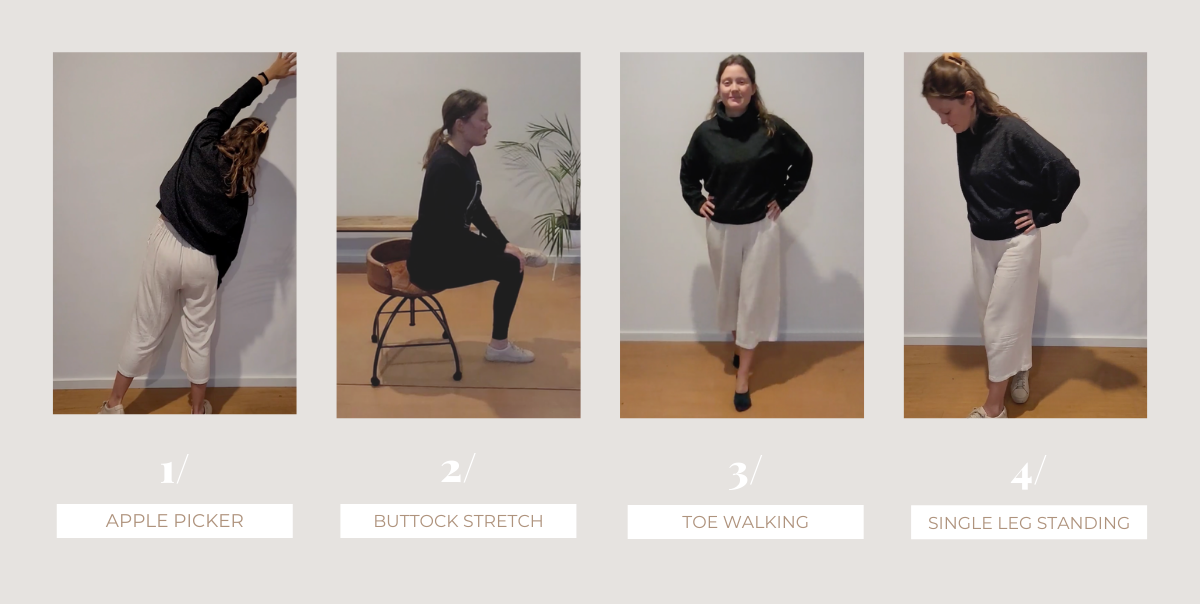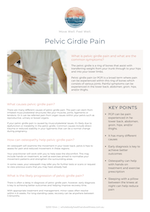In Australia, more than 10% of women suffer from the complex condition, edometriosis. Edometriosis is where inflammatory tissue similar to the edometirium grows outside of the uterus. Treating and managing endometriosis is often best with a multi-factoral approach. Here, we discuss what edometriosis make look like and treatment options.
Pelvic girdle pain (or PGP) is pain and discomfort experienced in the pelvic joints. The pelvic girdle is a ring of bones that assist with transferring weight from your trunk through the hips and into the lower limb. This makes it prone to injury, especially there is an imbalance or instability within this ring.
Pelvic girdle pain is a common complaint, which affects 1 in 5 women particularly during or after pregnancy. However, it’s not just women who can suffer from PGP. 1 in 12 men experience similar painful symptoms in their lower back, abdomen, groin, hips, and/or thighs.
Pelvic pain may occur because of:
- Changes to your posture
- Infections
- Abonormatilites in internal organs
- Increased pressure on your pelvic during pregnancy
- Hormonal changes that result in softening of ligaments supporting the pelvis
- Problems relating to the female reproductive system
Common symptoms of pelvic girdle pain
Symptoms of pelvic girdle pain caused by musculoskeletal structures are varied. You may feel discomfort, clicking, locking or grinding around your pelvic joints. You may also feel pain extending up your back or down your limbs.
Some of the complaints we hear from patients with PGP include:
- Difficulty with stairs or long walks
- Pain with opening legs (e.g. getting out of the car)
- Pain with standing for periods of time
- Pain when lying on side or back
- Poor balance on one leg
- Pain in the lower back or groin
- Pain which radiates down the legs
Note: If you are experiencing urinary/bowel/reproductive problems referral to other health professionals is indicated and should not be ignored.
Tips for at-home relief from pelvic girdle pain
Pelvic girdle pain can be quite debilitating and painful. The following tips will help to alleviate symptoms while you resolve the issue:
- Place a heat pack on your lower back or buttock. This will increase the blood supply to the area, stimulating repair and reducing discomfort.
- Aim to include regular gentle movements, such as short walks or stretches, in your day to keep the area moving. This will prevent the area of discomfort from becoming stiffer than it already is.
- Sleep with a pillow between your knees when you’re lying on your side. This can help to reduce painful symptoms throughout the night.
- Avoid static positions such as sitting for extended periods of time.
How can an osteopath help your pelvic girdle pain?
Osteopathy can help to relieve the discomfort associated with pelvic girdle pain and work to support the area. Your osteopath will examine the movement in your lower back, pelvis and hips to assess for pain and reduced movement in these regions.
Your practitioner will work with you to help ease the discomfort. This may include hands-on treatment, as well as exercises aimed to normalise your movement patterns and strengthen the surrounding areas.
In some cases, your osteopath may refer you for further tests or scans, or request to view previous scans that you may have already had.
4 simple exercises to help alleviate pelvic girdle pain

If you think you have pelvic girdle pain, try these simple exercises at home:
- Apple picker – to help stretch the side of your body
- Buttock stretch – to improve your hip mobility
- Toe walking – to help build stability and strength around your pelvis and lower back
- Single leg standing with rotation – aiming to encourage movement through the joints of your pelvis and hips
At Whole Body Health and Wellness, we have several osteopaths who are experienced and confident in treating pelvic girdle pain. To book an appointment, click here.

